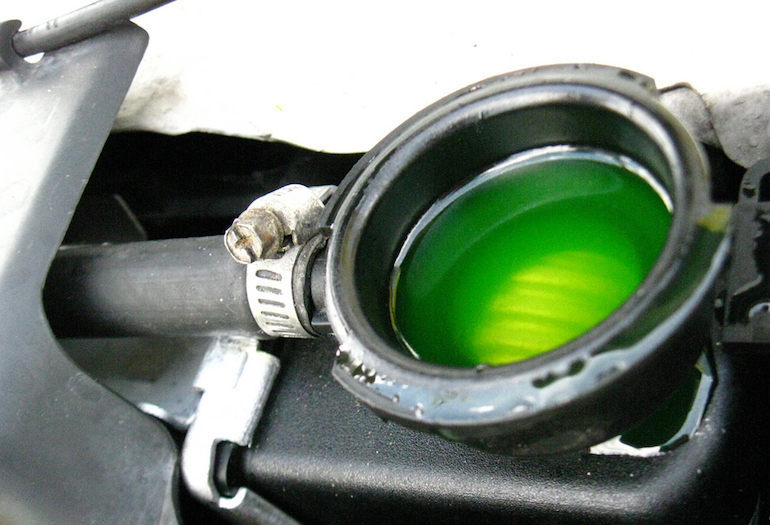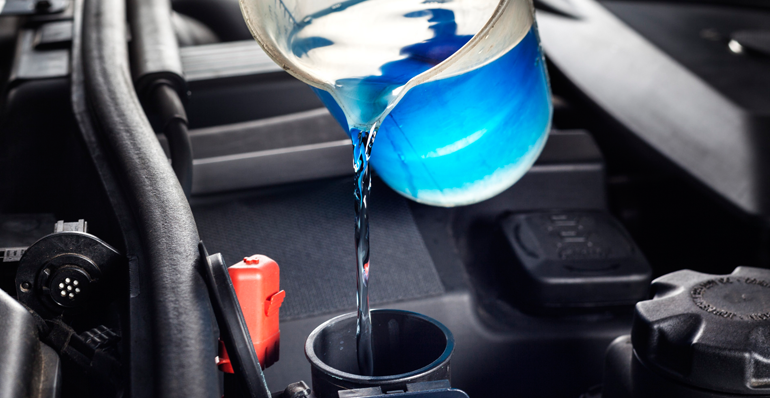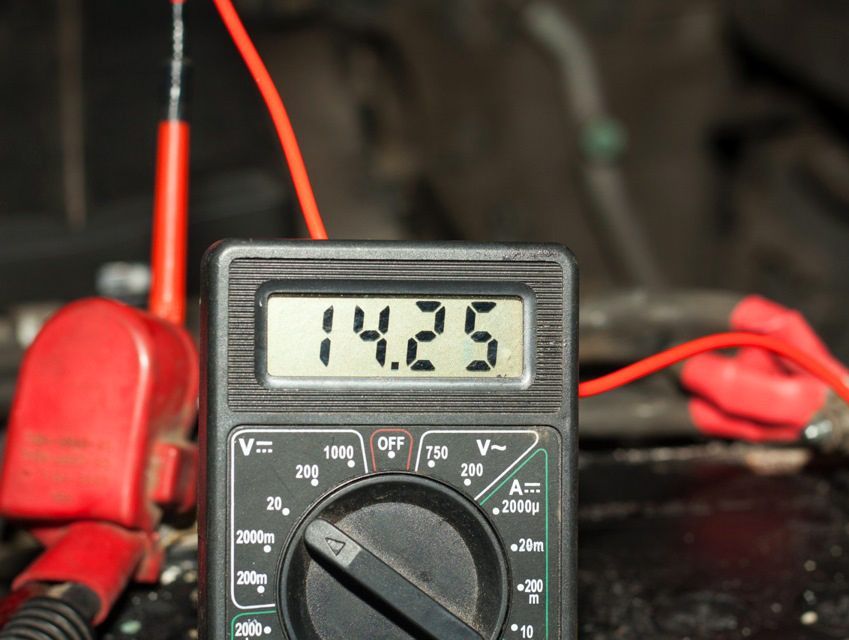
Antifreeze is leaving, there are no smudges - what to do? There is a solution!
If the low coolant level icon on the front panel lights up, leaks can be easily identified in most cases by dripping. Most often, a leak is detected from the expansion tank itself or from under its cap. If the honeycombs of the radiator or stove radiator are damaged, then you will see drips on the asphalt in the form of multi-colored spots. Pipes often leak, especially at the junctions. Another common problem is a leaking water pump and thermostat.
However, quite often a situation occurs when the level of antifreeze drops catastrophically quickly, and leaks cannot be visually detected. On our website Vodi.su, we devoted many articles to the design of the engine cooling system and the choice of antifreeze, where we mentioned that antifreeze needs to be changed once every two years. In addition, they talked about how to clean the cooling system. If there is a leak of expensive antifreeze, while it is not possible to detect obvious traces of a leak, the driver anxiously expects the most terrible development of events - antifreeze gets into the cylinders.

Antifreeze goes into the engine
So, if you have such a nuisance, then the most likely cause is a worn cylinder block gasket. Recall that the coolant circulates through special channels and in the engine, thereby maintaining a normal operating temperature in the region of 90-100 degrees. If the temperature rises above this mark, the metal will begin to expand and the pistons will simply jam.
The cylinder block gasket is used to seal and separate the block head from the engine. Over time, it wears out, or during the repair it was installed with violations. Accordingly, antifreeze from the head can gradually flow directly into the cylinders.
We list the main features:
- thick white smoke from the exhaust pipe with a sweet smell;
- a sharp increase in the oil level;
- when checking the level with a dipstick, we find that the oil has changed its consistency and there are bubbles in it.
Why is antifreeze getting into the engine so dangerous? The thing is that due to its mixing with oil, it loses its properties, becomes less viscous and acquires an uncharacteristic consistency. As a result, all conductive channels for the coolant are clogged, respectively, the heat exchange of the power unit suffers.
Than it threatens?
This threatens:
- overheating of the engine;
- rapid wear of the piston rings;
- rapid wear of the connecting rod and main bearings of the crankshaft;
- fast consumption of the antifreeze itself.
In a word, any adequate driver should pay attention in time to the falling level of antifreeze in the expansion tank. Of course, you don’t need to look under the hood, since the tank is equipped with a sensor that responds to changes in the volume of liquid in the system. In addition, an increase in engine oil volume and a drop in its pressure is another red flag to take action to prevent this scenario.

Why else can antifreeze leave without streaks?
Of course, the prospect of a major overhaul is not the most rosy expectation. However, sometimes you can observe a drop in the level of antifreeze without the above described signs. Where else can antifreeze leak?
In principle, there may not be many places of its leakage that could not be detected. Personally, from my own experience, I had to face a problem when one of the hoses leading to the stove radiator leaked. The thing is that these hoses are protected by heat-resistant material, on which small drops are almost invisible. In addition, they are located directly above the exhaust manifold and exhaust pipe of the muffler, which heat up during movement.
Thus, the drops simply evaporated. You can detect a leak either by a characteristic smell, or by carefully inspecting all the pipes and nozzles through which antifreeze circulates.

Elimination of breakage
If it's the block gasket, then you have to change it.
The task, let's say right away, is difficult:
- pick up the gasket itself;
- get to the block head cover, disconnect all kinds of pipes, sensors, spark plug tips and high voltage wires, etc .;
- remove the timing belt, while fixing the crankshaft pulley so as not to accidentally turn it;
- unscrew 8 or 12 bolts of the head cover and remove it;
- then unscrew the head itself;
- removal of the old gasket, cleaning and degreasing the surface;
- after replacing the gasket, repeat everything in the reverse order.
Pay attention to one point - the gasket can be absolutely undamaged, but the head bolts can be loosely tightened, which, in fact, causes a leak. In addition, there may be small cracks in the head. Thus, the editorial staff of Vodi.su recommends contacting specialized service stations, where everything will be done efficiently, quickly and with a guarantee. You can also save valuable time.
If the stove hoses are leaking, then you need to find the very place of the leak. And this is not always easy to do. Accordingly, you will have to change the nozzle. Joints often leak, where clamps, quick couplings or adapters between nozzles and hoses are installed.
Loading…

